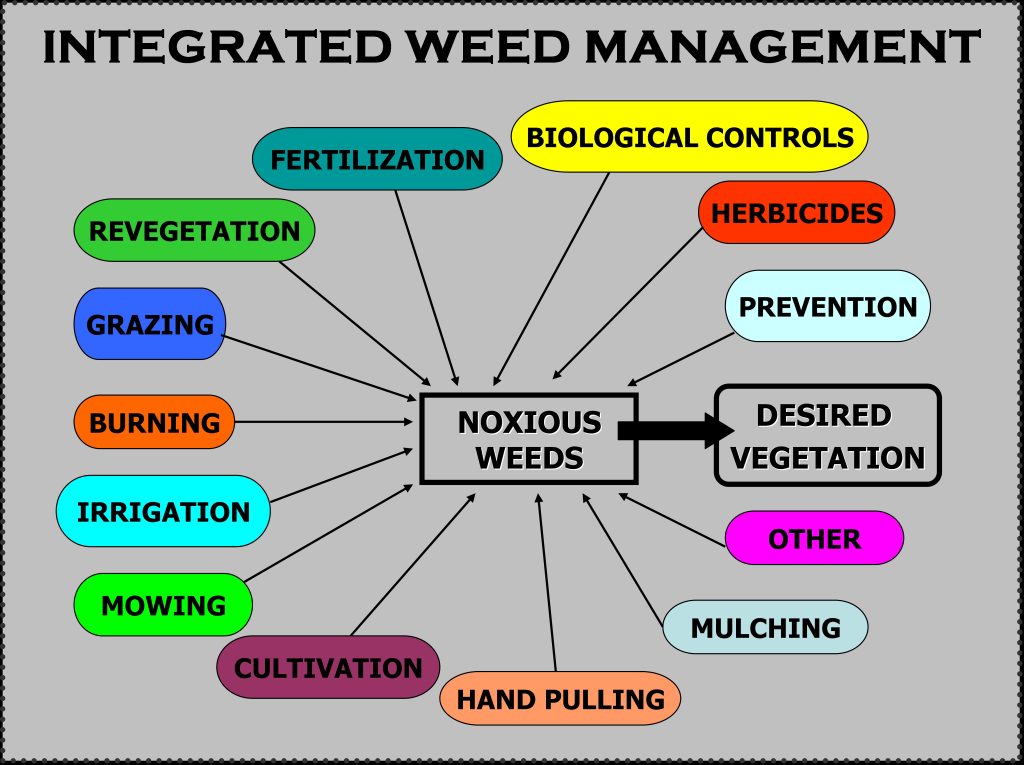Are weeds taking over your garden or lawn? You want a clean, healthy space, but harsh chemicals can harm the environment and your family’s well-being.
What if you could control those pesky plants without risking damage to your soil, pets, or kids? You’ll discover simple, eco-friendly weed control methods that work effectively and keep your outdoor space safe. Keep reading, and you’ll learn how to protect your garden naturally while saving time and effort.
Your green space deserves care that’s gentle yet powerful—let’s explore how to make that happen.
Benefits Of Eco Friendly Weed Control
Eco friendly weed control offers many benefits beyond just removing unwanted plants. It helps protect the environment and supports healthy soil. These methods keep your garden safe for people and pets. Choosing eco friendly options makes your yard safer and greener.
Environmental Impact Reduction
Eco friendly weed control reduces pollution in air and water. It avoids harmful chemicals that damage wildlife and plants. Natural methods protect beneficial insects like bees and butterflies. These approaches keep ecosystems balanced and thriving.
Soil Health Improvement
Using organic weed control helps maintain soil nutrients. It encourages healthy microbes and earthworms in the soil. Good soil retains water better and supports stronger plant growth. Chemical-free methods avoid soil degradation and erosion.
Safety For Humans And Pets
Eco friendly weed control is safer around children and animals. It eliminates toxic substances that can cause illness or allergies. These methods reduce risks of skin contact or accidental ingestion. A safer yard means peace of mind for families.

Credit: www.yourgreenpal.com
Manual Weed Removal Techniques
Manual weed removal is a simple, eco-friendly way to control unwanted plants. It avoids chemicals and protects the soil and nearby plants. These techniques work well for small gardens and help keep weeds under control.
Hand Pulling And Digging
Hand pulling is the easiest way to remove weeds. Grab the weed close to the ground and pull it out slowly. Try to remove the whole root to stop regrowth. Digging works best for weeds with deep roots. Use a small shovel or trowel to loosen the soil around the root. This method prevents weeds from coming back quickly.
Using Weeding Tools
Weeding tools make manual removal easier and faster. Tools like hoes, weeders, and forks help reach tough spots. A hoe cuts weeds just below the soil surface. A weeder pulls out roots without much bending. These tools reduce strain and help remove weeds more cleanly.
Mulching To Suppress Weeds
Mulching covers the soil and blocks sunlight from weed seeds. Use organic mulch like straw, leaves, or wood chips. Mulch keeps the soil moist and cool, helping plants grow better. It also stops many weeds from sprouting. Apply mulch in a thick layer around your plants for best results.
Natural Herbicides And Sprays
Natural herbicides and sprays offer a safe way to control weeds without harming the environment. These methods use ingredients found in nature to kill or weaken unwanted plants. They work well in gardens, yards, and small farms. Using natural solutions helps keep soil and water clean. It also protects beneficial insects and wildlife.
Many natural herbicides are easy to make at home. They target weeds without leaving toxic residues. These eco-friendly sprays break down quickly and do not build up in the soil. They are a smart choice for gardeners who want green, healthy spaces.
Vinegar-based Solutions
Vinegar is a popular natural weed killer. It contains acetic acid, which dries out plant leaves. Spray vinegar directly on weeds for best results. Use a stronger vinegar, like horticultural vinegar, for tough weeds. Avoid spraying on grass or flowers. Vinegar works best on young, small weeds.
Essential Oil Extracts
Essential oils such as clove, cinnamon, and citrus oil kill weeds naturally. They disrupt weed cell membranes and stop growth. Mix a few drops with water and spray on weed leaves. These oils smell nice and are safe for pets. Use carefully to avoid harming desired plants nearby.
Boiling Water Application
Pouring boiling water on weeds is simple and effective. The hot water burns the leaves and roots quickly. This method works well on cracks in driveways and paths. It does not leave chemicals behind. Repeat treatment may be needed for deep-rooted weeds. Be cautious to avoid burning your skin or nearby plants.

Credit: www.yourgreenpal.com
Preventative Weed Control Strategies
Preventative weed control strategies help keep gardens and lawns healthy. These methods stop weeds before they grow and spread. Using eco-friendly ways protects the environment and reduces chemicals in your yard. Small steps make a big difference in weed management.
Proper Lawn Maintenance
Healthy lawns resist weed growth naturally. Mow grass at the right height. Not too short, to avoid stress on grass. Water deeply but less often to encourage strong roots. Remove dead leaves and debris to prevent weed seeds from settling.
Plant Selection And Spacing
Choose plants that grow well in your area. Strong, fast-growing plants crowd out weeds. Space plants correctly to reduce empty soil spots. Close spacing blocks sunlight from reaching weed seeds. This stops many weeds from sprouting.
Soil Solarization
Soil solarization uses the sun’s heat to kill weed seeds. Cover moist soil with clear plastic for several weeks. The heat traps under the plastic and destroys weed seeds. This method works best in hot, sunny months. It is safe and chemical-free.
Cover Crops And Crop Rotation
Cover crops and crop rotation are natural ways to control weeds without chemicals. These methods help keep soil healthy and reduce weed growth. They work by using plants that cover the ground and by changing crops each season. This confuses weeds and stops them from taking over your garden or field.
Types Of Cover Crops
Some common cover crops include clover, rye, and vetch. Clover adds nitrogen to the soil, helping other plants grow. Rye grows fast and forms a thick mat that blocks sunlight from weeds. Vetch also adds nutrients and covers the soil well. Each cover crop has a special role in stopping weeds and improving soil.
Benefits For Weed Suppression
Cover crops block sunlight, so weeds cannot grow easily. Their roots hold soil tight, preventing weeds from taking root. Cover crops also use water and nutrients, leaving less for weeds. These plants create a thick layer on the ground that makes it hard for weed seeds to sprout. This natural barrier keeps weeds low without using chemicals.
Rotation Planning Tips
Change the type of crop you plant each season. This stops weeds from getting used to one plant. Plan rotations by mixing deep-rooted and shallow-rooted crops. Use cover crops between main crops to keep soil covered. Keep a record of what you plant and when. This helps you see which rotations work best to reduce weeds.
Biological Weed Control Options
Biological weed control uses natural enemies to reduce weed growth. This method is safe for the environment and avoids chemicals. It helps keep the soil healthy and supports other plants. Several options exist for biological weed control.
Using Beneficial Insects
Certain insects feed on weeds and stop their spread. These insects target specific weed species. They reduce weed seeds and damage weed leaves. Introducing these insects can lower weed problems naturally. This method works well in gardens and farms.
Grazing Animals
Animals like goats and sheep eat many types of weeds. Grazing controls weeds without harming the soil. Animals reach areas machines cannot access. They also add natural fertilizer as they graze. Grazing is useful for large weed-infested areas.
Microbial Agents
Microbes such as fungi and bacteria attack weed roots or leaves. These agents weaken weeds and slow their growth. They act quietly below the surface, out of sight. Microbial weed control can be sprayed or added to soil. It works best for specific weed types.
Tools And Equipment For Natural Weed Control
Natural weed control depends on using the right tools and equipment. These tools help remove weeds safely and protect your plants and soil. Choosing eco friendly tools supports a healthy garden and reduces chemical use.
Simple tools can make weeding easier and more effective. Safe equipment allows careful treatment without harming the environment. Proper maintenance keeps tools working longer and saves money.
Eco Friendly Weeding Tools
Hand tools like hoes, weed pullers, and forks work well for natural weed control. They remove weeds by the roots, stopping regrowth. Tools made from sustainable materials like wood and recycled metal are better for nature.
Using manual tools reduces the need for harmful herbicides. Pulling weeds early prevents them from spreading seeds. Small hand tools fit well in tight garden spaces.
Safe Application Equipment
Natural weed killers need careful application. Spray bottles with adjustable nozzles help control the amount used. Backpack sprayers spread natural solutions evenly over large areas.
Protective gear like gloves and masks keeps you safe from irritants. Equipment designed for low pressure reduces drift and protects nearby plants. Choose containers that are easy to clean and refill.
Maintenance Tips
Clean tools after each use to stop rust and damage. Sharpen blades regularly to make cutting easier. Store tools in dry places to extend their life.
Check equipment parts often and replace worn pieces quickly. Lubricate moving parts to keep tools smooth. Proper care saves money and keeps natural weed control effective.

Credit: agritechhelp.com
Frequently Asked Questions
What Are The Best Eco-friendly Weed Control Methods?
The best eco-friendly weed control methods include mulching, hand weeding, vinegar application, and solarization. These methods avoid harmful chemicals and protect soil health. They effectively reduce weeds while supporting biodiversity and sustainability in gardens and farms.
How Does Mulching Help In Weed Control?
Mulching suppresses weed growth by blocking sunlight and retaining soil moisture. Organic mulches also enrich the soil as they decompose. This method reduces the need for herbicides and promotes a healthy garden ecosystem naturally.
Can Vinegar Be Used Safely For Weed Control?
Yes, vinegar is a natural herbicide that kills weeds by drying their leaves. Use horticultural vinegar for stronger effects. Apply carefully to avoid damaging desirable plants. It’s an eco-friendly alternative to chemical herbicides.
Is Hand Weeding Effective For Eco-friendly Weed Control?
Hand weeding is highly effective and environmentally safe. It physically removes weeds without chemicals, preserving soil and beneficial insects. Regular hand weeding prevents weed spread and maintains a healthy garden naturally.
Conclusion
Choosing eco friendly weed control helps protect your garden and the planet. These methods keep soil healthy and water clean. They also support beneficial insects and wildlife around your home. Using natural solutions reduces harmful chemicals and risks to your family’s health.
Small actions make a big difference over time. Start with simple steps like mulching or hand weeding today. Your garden will thrive, and nature will thank you. Sustainable weed control is good for everyone. Why not try it and see the results yourself?
